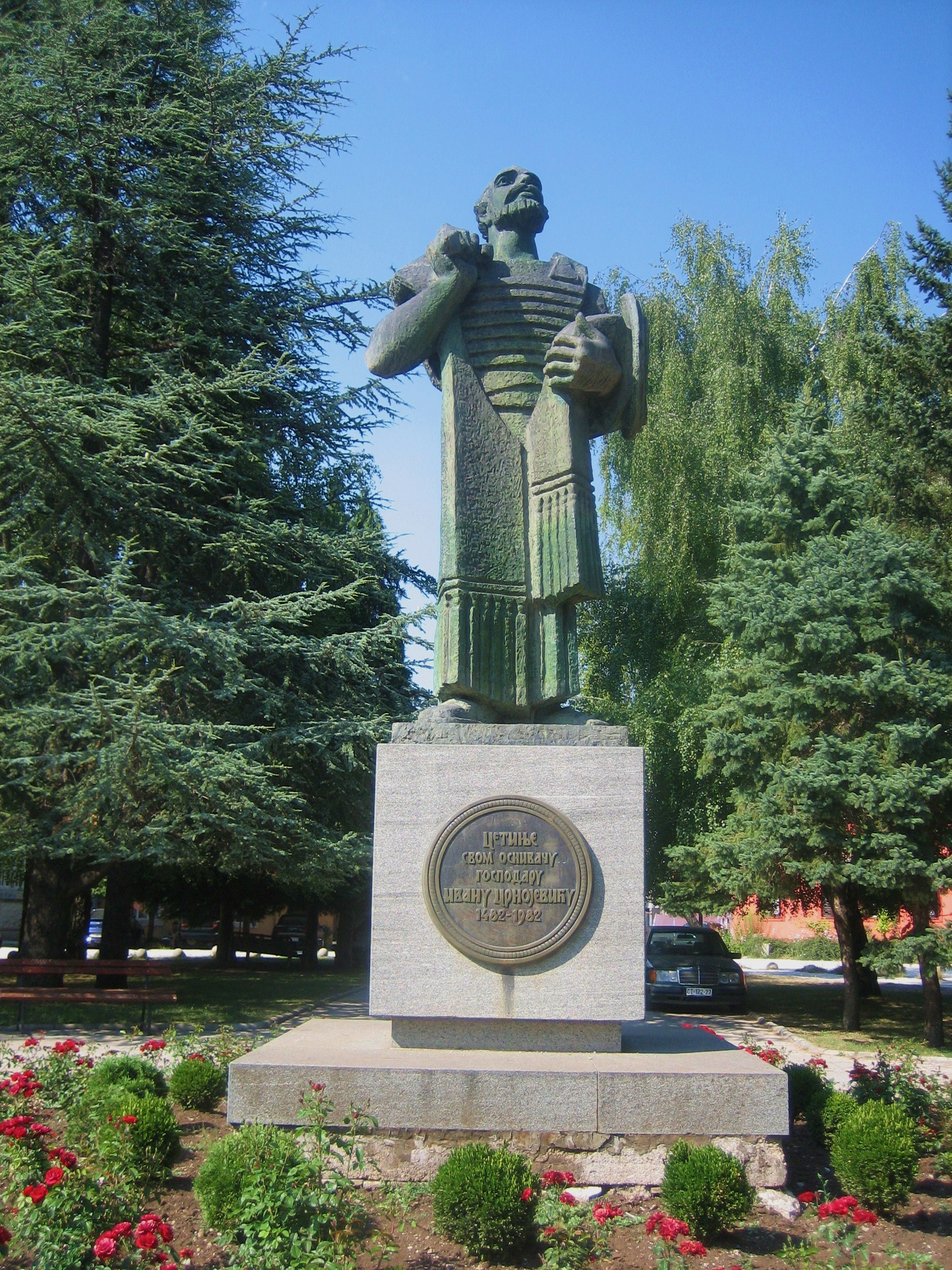|
Čevo
Čevo ( sr-cyrl, Чево}), historically also known as Kčevo (Кчево), is a village in the municipality of Cetinje, Montenegro. History The village was held by the Ozrinići tribe of the Katunska nahija. Five families of the Ozrinići founded the settlement of Ozrinići in the Nikšić area in 1657. Demographics Notable people * Milena Vukotić (1848–1923), Queen consort of Montenegro *Janko Vukotić Janko Vukotić ( sr-cyr, Јанко Вукотић; 18 February 1866 – 4 February 1927) was a Montenegrin serdar, general in the armies of the Principality and Kingdom of Montenegro in the Balkan Wars and World War I. Biography Vukotić was bo ... (1866–1927), Montenegrin politician and general. * Vasilija Vukotić (1897–1970), Montenegrin military heroine of World War I References {{DEFAULTSORT:Cevo Populated places in Cetinje Municipality ... [...More Info...] [...Related Items...] OR: [Wikipedia] [Google] [Baidu] |
Milena Of Montenegro
Milena Petrović-Njegoš (''née'' Vukotić, sr-Cyrl, Милена Петровић-Његош; 4 May 1847 – 16 March 1923) was the only Queen consort of Montenegro as the wife of Nicholas I (28 August 1910 – 26 November 1918). She was regent of Montenegro during the absence of her spouse in 1869 and in 1883. She also served as titular regent for the titular king-in-exile Michael in 1922–1923. Early life Born in the Montenegrin village of Čevo, Milena was a daughter of Voivode Petar Vukotić and wife Jelena Vojvodić born in Viš, Danilovgrad. Her father was one of the greatest landowners in Montenegro and a close friend of Voivode Mirko Petrović-Njegoš with whom he had fought in the wars of the 1850s.Houston, '' Nikola & Milena'', p. 86 The two friends decided to consolidate their alliance with the union of their children. In 1853, Milena, age only six, was betrothed to Mirkos's only son, Nikola, age twelve. Nikola was the nephew and heir of the childless reigning ... [...More Info...] [...Related Items...] OR: [Wikipedia] [Google] [Baidu] |
Janko Vukotić
Janko Vukotić ( sr-cyr, Јанко Вукотић; 18 February 1866 – 4 February 1927) was a Montenegrin serdar, general in the armies of the Principality and Kingdom of Montenegro in the Balkan Wars and World War I. Biography Vukotić was born in Čevo, belonging to the Vukotić brotherhood; he was related to Petar and Milena Vukotić. He studied at the lower gymnasium at Cetinje, and at the Military Academy of Modena in Italy. Politics Vukotić served as Minister of Defence of Kingdom of Montenegro in the periods of 1905–1907, 1911–1912 and 1913–1915, and as Prime Minister of Montenegro in 1913–1915. Balkan Wars Vukotić commanded the Montenegrin Eastern Army during the First Balkan War and the Montenegrin division of the First Serbian Army during the Second Balkan War, in which he distinguished himself at the Battle of Bregalnica. World War I During the First World War, Vukotić was the Chief of Staff of the Montenegrin Army and the Commander of the Sandž ... [...More Info...] [...Related Items...] OR: [Wikipedia] [Google] [Baidu] |
Vasilija Vukotić
Vasilija Vukotić ( sr-cyr, Василија Вукотић ; (1897–1970) was a serbian from Montenegro military ordonance and a daughter of the Serdar Janko Vukotić, accompanying her father in the armies of the Principality and Kingdom of Montenegro throughout all the battles in the Balkan Wars and World War I. Vasilija Vukotić was and remains a heroine and a role model for the participation of Montenegrin women in all wars for the liberation of the Serbian people from the occupiers. In the newly established state of Serb Croats and Slovenes, her role and significance, as the role and significance of her father, were completely suppressed. Biography Vasilija Vukotić was born in Čevo in 1897. She was the only daughter and the eldest of two children of Serdar Janko Vukotić. Belonging to the Vukotić brotherhood, she was related to Petar and Milena Vukotić. She took part in the First Balkan War, the Second Balkan War, and World War I, until the fall of the Montenegrin ... [...More Info...] [...Related Items...] OR: [Wikipedia] [Google] [Baidu] |
Cetinje Coat-of-Arms
Cetinje (, ) is a town in Montenegro. It is the former royal capital (''prijestonica'' / приjестоница) of Montenegro and is the location of several national institutions, including the official residence of the president of Montenegro. According to the 2011 census, the town had a population of 14,093 while the Cetinje Municipality had 16,657 residents . Cetinje is the centre of Cetinje Municipality. The city rests on a small karst plain surrounded by limestone mountains, including Mount Lovćen, the legendary mountain in Montenegrin historiography. Cetinje was founded in the 15th century and became a cradle of the culture of Montenegro. Its status as the honorary capital of Montenegro is due to its heritage as a long-serving former capital of Montenegro. Name In Montenegrin, Bosnian, Croatian, and Serbian, it is known as ''Cetinje'' (archaically Цетинѣ / ''Cetině''); in Italian as ''Cettigne''; in Greek as Κετίγνη (''Ketígni''); in Turkish as ''Çetine ... [...More Info...] [...Related Items...] OR: [Wikipedia] [Google] [Baidu] |
Ozrinići (tribe)
Ozrinići ( sr-cyr, Озринићи) is a historical tribe () and region in Montenegro. During the Ottoman period, it was one of the largest tribe of the Katunska nahija, one of the four territorial units of Old Montenegro. History The first reference to the Ozrinići comes from a letter issued by the Serbian Chancellery in Dubrovnik in 1411. The document, a complaint from Ragusan people addressed to Jelena Balšić, is about the looting committed by the Ozrinići, together with the Bjelopavlići, Maznice and Malonšići, on Ragusan merchants on their way through Zeta while they were returning from Serbia. The Ozrinići are mentioned again in the 1489 charter of Ivan Crnojević, then in the 1570–1571 defter of the Sandjak of Peć. Five families of the Ozrinići founded the settlement of Ozrinići in the Nikšić area in 1597. During the Ottoman period, from the 16th up to the end of the 18th century, the Ozrinići were the largest tribe of the Katunska nahija, one of the ... [...More Info...] [...Related Items...] OR: [Wikipedia] [Google] [Baidu] |
Nikšić
Nikšić ( cnr, Никшић, italic=no, sr-cyrl, Никшић, italic=no; ), is the second largest city in Montenegro, with a total population of 56,970 located in the west of the country, in the centre of the spacious Nikšić field at the foot of Trebjesa Hill. It is the center of Nikšić Municipality with population of 72,443 according to 2011 census, which is the largest municipality by area and second most inhabited after Podgorica. It was also the largest municipality by area in the former Yugoslavia. It is an important industrial, cultural, and educational center. Name In classical antiquity, the area of Nikšić was the site of the settlement of the Illyrian tribe of the Endirudini and was known in sources of the time as Anderba or Enderon. The Roman Empire built a military camp (''castrum Anderba'') in the 4th century AD, which was known as the Ostrogothic fortress ''Anagastum'' (after 459. AD). After Slavic settlement in the region, Anagastum became Slavic ''Onogošt' ... [...More Info...] [...Related Items...] OR: [Wikipedia] [Google] [Baidu] |
Kingdom Of Montenegro
The Kingdom of Montenegro ( sr, Краљевина Црна Горa, Kraljevina Crna Gora) was a monarchy in southeastern Europe, present-day Montenegro, during the tumultuous period of time on the Balkan Peninsula leading up to and during World War I. Officially it was a constitutional monarchy, but absolutist in practice. On 28 November 1918, following the end of World War I, with the Montenegrin government still in exile, the Podgorica Assembly proclaimed unification with the Kingdom of Serbia, which itself was merged into the Kingdom of Serbs, Croats and Slovenes three days later, on 1 December 1918. This unification with Serbia would last, through various successor states, for almost 88 years, until finally coming to an end in 2006. History Prince Nicholas of Montenegro proclaimed the Kingdom of Montenegro in Cetinje on 28 August 1910, elevating the country from the rank of Principality. King Nicholas I had ruled the country as Prince since 1860, and had initiated severa ... [...More Info...] [...Related Items...] OR: [Wikipedia] [Google] [Baidu] |
Montenegrins
Montenegrins ( cnr, Црногорци, Crnogorci, or ; lit. "Black Mountain People") are a South Slavic ethnic group that share a common Montenegrin culture, history, and language, identified with the country of Montenegro. Genetics According to one triple analysis – autosomal, mitochondrial and paternal — of available data from large-scale studies on Balto-Slavs and their proximal populations, the whole genome SNP data situates Montenegrins with Serbs in between two Balkan clusters. According to a 2020 autosomal marker analysis, Montenegrins are situated in-between Serbians and Kosovo Albanians. Y-DNA genetic study done in 2010 on 404 male individuals from Montenegro gave the following results: haplogroup I2a (29.7%), E-V13 (26.9%), R1b (9.4%), R1a (7.6%), I1 (6.1%), J2a1 (4.7%), J2b (4.4%), G2a (2.4%), Q (1.9%), I2b (1.7%), N (1.4%), H (1.4%), L (1.2%), and J1 (0.49%). A 2022 study on 267 samples from northeastern Montenegro found that the "most common ... [...More Info...] [...Related Items...] OR: [Wikipedia] [Google] [Baidu] |
List Of Sovereign States
The following is a list providing an overview of sovereign states around the world with information on their status and recognition of their sovereignty. The 206 listed states can be divided into three categories based on membership within the United Nations System: 193 UN member states, 2 UN General Assembly non-member observer states, and 11 other states. The ''sovereignty dispute'' column indicates states having undisputed sovereignty (188 states, of which there are 187 UN member states and 1 UN General Assembly non-member observer state), states having disputed sovereignty (16 states, of which there are 6 UN member states, 1 UN General Assembly non-member observer state, and 9 de facto states), and states having a special political status (2 states, both in free association with New Zealand). Compiling a list such as this can be a complicated and controversial process, as there is no definition that is binding on all the members of the community of nations conce ... [...More Info...] [...Related Items...] OR: [Wikipedia] [Google] [Baidu] |
Ozrinići
Ozrinići ( sr-Cyrl, Озринићи) is a village in the municipality of Nikšić, Montenegro. History The village was founded by five families of the Ozrinići tribe in 1597. Apart from the Ozrinići descendants, from the 18th century onwards there were families that settled from Banjani, Kriči, Pješivci, and from other regions and tribes. In March 1942, during the leftist errors of Second World War, Ozrinići were burned down by Partisans from Nikšić Nikšić ( cnr, Никшић, italic=no, sr-cyrl, Никшић, italic=no; ), is the second largest city in Montenegro, with a total population of 56,970 located in the west of the country, in the centre of the spacious Nikšić field at the foot .... Demographics According to the 2003 census, the town has a population of 2,024 people. According to the 2011 census, its population was 2,057. References Populated places in Nikšić Municipality {{Montenegro-geo-stub ... [...More Info...] [...Related Items...] OR: [Wikipedia] [Google] [Baidu] |
Municipalities Of Montenegro
The ''municipalities'' ( Serbian: ''opštine'' / општине, singular: ''opština'' / општина) are the first level administrative subdivisions of Montenegro. The country is divided into 25 municipalities including the Old Royal Capital Cetinje and the Podgorica Capital City. Podgorica is divided into one subdivision called '' city municipality'' (Montenegrin: ''gradska opština'' / градска општина, plural: ''gradske opštine'' / градске општине), forming the most basic level of local government. Recently created: * Petnjica Municipality (2013) *Gusinje Municipality (2014) *Tuzi Municipality Tuzi Municipality ( Montenegrin: Opština Tuzi / Општина Тузи; Albanian: Komuna e Tuzit) is one of the 24 Municipalities of Montenegro. The municipal seat is the town of Tuzi. The municipality is located about 10 km south of the ca ... (2018) * Zeta Municipality (2022) ** The ''Union of Municipalities of Montenegro'' is a national assoc ... [...More Info...] [...Related Items...] OR: [Wikipedia] [Google] [Baidu] |





